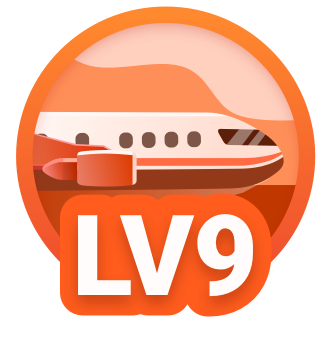Popular Trip Moments
Experience Buyeo Baekje Cultural Complex | [Domestic/Buyeo] “Lotte Resort”, a great place to go with kids 🥰 | 🏯 Mood Village Cafe where you can feel the charm of Hanok | A must-visit emotional cafe when visiting Buyeo | Buyeo cafes worth visiting | Baekje Cultural Complex | 🏰 Time travel from Buyeo and Iksan, Baekje Historic Sites! ⏳✨ | Must-stay hotels in Buryŏng-gun | Experience comfortable and peaceful accommodation | Recommended family travel resorts in Buyeo ▪️Lotte Resort Buyeo | Recommended cafes to visit when traveling to Buyeo✨ | “Seongheungsanseong Fortress” is the number one travel destination for life shots in Buyeo and is famous as a filming location for dramas. | Must-eat Makguksu restaurant in Buyeo | Buyeo Lotte Resort | Buyeo Seodong Park – Blossoms Amongst Lotus Legacy | Chungnam Buyeo Restaurant | Baekje Buyeo Cultural Complex | Buyeo Baekje Historic Site | Gungnam Pond Pond Pavilion | When buckwheat flowers bloom | Yulga | Goodrae Sculpture Park | Buyeo attractions | Buyeo cherry blossoms | Naesan Elementary School | This is the Baekje Cultural Complex in Buyeo-gun, Chungcheongnam-do, South Korea. | This is the Baekje History and Culture Museum in Buyeo-gun, Chungcheongnam-do, South Korea. | National Buyeo Museum in Chungcheongnam-do, South Korea. | This is the Jeongnimsa Temple site in Buyeo-gun, Chungcheongnam-do, South Korea. | This is the Baekje Roof Tile Cultural Center in Buyeo-gun, Chungcheongnam-do, South Korea.
Recommended Attractions at Popular Destinations
Bangkok attraction near me | Manila attraction near me | Tokyo attraction near me | Taipei attraction near me | Hong Kong attraction near me | Seoul attraction near me | Kuala Lumpur attraction near me | Los Angeles attraction near me | Shanghai attraction near me | New York attraction near me | Shenzhen attraction near me | Osaka attraction near me | Singapore attraction near me | London attraction near me | Guangzhou attraction near me | San Francisco attraction near me | Beijing attraction near me | Macau attraction near me | Bali attraction near me | Jakarta attraction near me | Paris attraction near me | Ho Chi Minh City attraction near me | Istanbul attraction near me | Phuket attraction near me | Chicago attraction near me | Seattle attraction near me | Toronto attraction near me | Orlando attraction near me | Cebu attraction near me | Chiang Mai attraction near me
Popular Attractions
Sunway Lagoon Theme Park | Shanghai Museum | Paribu Cineverse CEPA | Spruce Meadow | Batu Caves | China Aviation Museum | Hong Kong Disneyland | WILD LIFE Sydney Zoo | One Line Sky Scenic Area | A Bamboo-Lined Path Yunqi | Aqua Luna | Wuzhen | Nine Creeks in the Misty Forest | Taman Safari Bali | Christchurch Botanic Gardens | Gwangan Bridge | "Tuo Ling Legend" Show | Wulin Square | Well Agro | Stelios L. Siepis Bust | Cuevas de La Audiencia, Temisas | Planetario Puebla | Vorpommerische Boddenlandschaft / Hiddensee National Park | Lits Camping & Canoe Central | Clifty Park | Gülcü Meydanlık Cami | مسجد Masjid | Ashland City Park | Mirador de Tozar | Wat Ban Nam Yen
Popular Restaurants in Buyeo-gun
Sol Naeeum | Gudurae Dolsolbap | Pancake Juhyeon Daeok | Great Dish Buckwheat Cold Noodles | Naruteo Sikdang | Hyangujeong | Red Clay Jeong | Gu Deure Korean Beef Town | Haneulchae | Sion Street Food | Buyeo Chon Pig Stew | Gwangmyeong Restaurant | Street Daejang | Old Days Whole Chicken | Moguchon | at267 | Lotteria Sinbuyeo Store | Seongsimdang | Geujibe Gamyeon | Manor Buckwheat Noodles | Dongso Ye | Mandarin | Pizza School | Yukrim Bulgogi | Feel | at 267 | Geumbanhyang | Angel in Us | Elre Na Garden | Seodong Hanwoo
Popular Ranked Lists
Top 9 Best Things to Do in Hechi | Popular Luxury Hotels Near Silivri | Top 5 Best Things to Do in Huaihua | Top 10 Local Restaurants in Dallas | Popular Best Things to Do in Shangqiu | Popular Luxury Hotels Near Higashiagatsuma | Popular Best Things to Do in Longyou | Top 3 Luxury Hotels in Tashkent | Top 20 Local Restaurants in Xining | Popular Best Things to Do in Huangshi | Popular Best Things to Do in Jiaozuo | Top 4 Best Things to Do in Yingkou | Top 20 Local Restaurants in Yinchuan | Top 10 Local Restaurants in Luxor | Top 3 Best Things to Do in Linxia Prefecture | Top 19 Local Restaurants in Kashgar | Popular Luxury Hotels Near Chichibu | Top 10 Local Restaurants in The Rocks | Popular Local Restaurants in Bangkok | Top 10 Local Restaurants in Adelaide | Top 18 Local Restaurants in Dunhuang | Top 17 Local Restaurants in Xuzhou | Popular Luxury Hotels Near Fort William | Popular Luxury Hotels Near Manzanillo | Top 4 Best Things to Do in Jinjiang | Top 3 Best Things to Do in Shengsi | Popular Luxury Hotels in Al Ula | Top 19 Local Restaurants in Beihai | Top 7 Luxury Hotels in Galle | Top 6 Best Things to Do in Jincheng
Payment Methods
Our Partners
Copyright © 2025 Trip.com Travel Singapore Pte. Ltd. All rights reserved
Site Operator: Trip.com Travel Singapore Pte. Ltd.
Site Operator: Trip.com Travel Singapore Pte. Ltd.




















